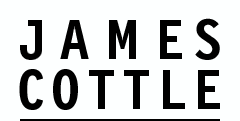| home | radio | theatre | screen | blog | info | |||
 |
||||||||
|
||||||||
| The Female Character Paradox - Why Every "Solution" Leads to More Problems |
||||||||
| I’m going to shock you like a sadistic sentient potato clock – writing female characters is not hard. Or, at least, not any harder than writing male characters. If you have been raised with even the slightest appreciation for women’s significance within society, then, honestly, there shouldn’t be an issue. But for many struggling scribes, there is. This is not due to a lack of respect though – it’s more to do with their points of reference, i.e. other movies / TV, rather than reality. Therefore, many writing gurus offer “quick fixes” and “story solutions” that, I’d wager, don’t particularly hold up under scrutiny. | ||||||||
| Write Them As A Man First |
This
is the tip that bothers me the most, cropping up in various reputable
advice blogs, as well as a few rather boring dreams. Ordering you
to build a male character from the ground up and then just swap the
names and pronouns is the equivalent of saying “write your giraffe
character as a gecko first, because geckos are far more relatable”.
What’s even the point of turning them into a woman at that stage
when they possess zero inherently female attributes? I get that we’re exposed to men (not like that) on our screens far more regularly because they’re prime sources of conflict (e.g. competitive rivalries, selfish tendencies, terrible hair, etc.), but women, whilst not making up the majority of war criminals, murderers and schoolyard ruffians, are arguably FAR more interesting, because of the conflict they face almost everywhere they go, every day of their lives. |
|||||||
| Give Them A Flaw | Flawed
characters are relatable, because we are all flawed (except maybe
me). That’s not the issue here. Notice how I said “A Flaw”,
as in, singular? This reductive method of characterisation might stand
up in the Teletubbies (e.g. the metrosexual one and then the other
three), but a single flaw doesn’t endear us to characters in
modern narratives. Why? Because the writer uses that flaw to death,
making what originally seemed to be a kooky quirk into an insufferable
stain upon the narrative table cloth. Bottom line – We don’t want to see a character making the same mistakes over and over, because it’s more fun to see them making new mistakes when they finally think they’ve learnt something. Common singular flaws I’ve noticed attached to female characters are – controlling, nagging, obsessive, insecure, bitchy, psychotic, narcissistic, dumb, slutty, incompetent, etc. Look at that list and remove the ones you think could be applied to a male character. I’d bet that all the remaining ones involve how women apparently treat men. Whilst I’m not saying some of these singular traits should be completely abolished, because there’s a tiny degree of truth within them, blending them with other more rounded flaws can lead to more realistic depictions. |
|||||||
| Make Them Infallible | On
the flip side, some would say that avoiding these flaws will ultimately
make for a more likeable female character. While all your male characters
are screwing around, getting into trouble and bonding over their shared
experiences, the female character who is just simply better
than the others (often “the voice of reason” or “the
straight woman”) barely faces any resistance, and glides through
the obstacles, putting all the others to shame. Overcoming obstacles
easily doesn’t make us like you... We want to see people put
through the ringer, struggling with all their might against [INSERT
ANTAGONISTIC FORCE HERE], because we’re masochists like that.
I’ve had the pleasure of knowing some truly amazing women in my lifetime, which, considering that women outnumber men in the global population, isn’t a stretch to believe. Also unsurprisingly, I’ve longingly pined over a select few, practically worshipping them through my thick rose-tinted spectacles, wondering how I could ever match up to such paragons of humanity. The reality, of course, is that they’re not perfect, and their side of the “love interest” coin is not just a case of her “waiting for the right guy to swoop her off her feet”. I tried the feet swooping thing before, and it definitely didn’t go down well. |
|||||||
| Give Them Narrative Agency | This
is actually a good piece of advice that, more than anything, suggests
a flaw in the manner in which we tell stories. Say you’ve got
a killer concept about a serial killer who only kills people conceptually,
and now you’re building your characters into the story. You
come to your female lead, most likely the one to somehow make it to
the end, because everyone else is just slightly more inept at living
than her. Now you’re told to “give her narrative agency”,
suggesting that, up until this point, the story has been happening,
and that, up until this point, she’s been just sort of... there. Your character, no matter what gender, needs to be making things happen, rather than have things happening to them. That’s Writing #201 (#101 is to be able to spell |
|||||||
| Write Them Without Gender Being A Factor | It’s
clear that point #1 was probably the most useless example on this
list, and, in fairness, to the writing community, we’ve tried
to offer a gender-less approach as a solution. Just writing “characters”
is definitely a strong way to build story, as they operate as the
breeze-blocks upon which your fictitious conservatory is constructed.
But to completely remove gender from the equation is omitting a fundamental
proportion of what makes a person a person. Think of a truly great iconic film character from the endless passages of time, male or female. Now, in your head, flip the gender of the character. How much does that change the story? It probably won’t seem to be much at first, but think of the way the other characters react to that person. Think of how that person might change their approach to overcoming obstacles. Think of how we, the audience, would see that character. Think of how they’re never going to give you up, never going to let you down, and how I just rick-rolled you in your mind. |
|||||||
| So what’s the solution? | I
guess the point of all this is to say that there isn’t a single
method of “fixing” a female character, in the same way
that there isn’t a single method of building a male one. It
really all comes down to not spending your time worrying about it,
and writing what feels natural to reality rather than what you’ve
already seen in the media. If you’re not a fan of women, then
don’t bother writing. Ever. Now, I don’t pretend to understand
women, but it doesn’t mean I don’t know what they can
be like. Interested to hear your thoughts on this, ladies. Call me...
|
|||||||
| James Cottle © 2019 | ||||||||
